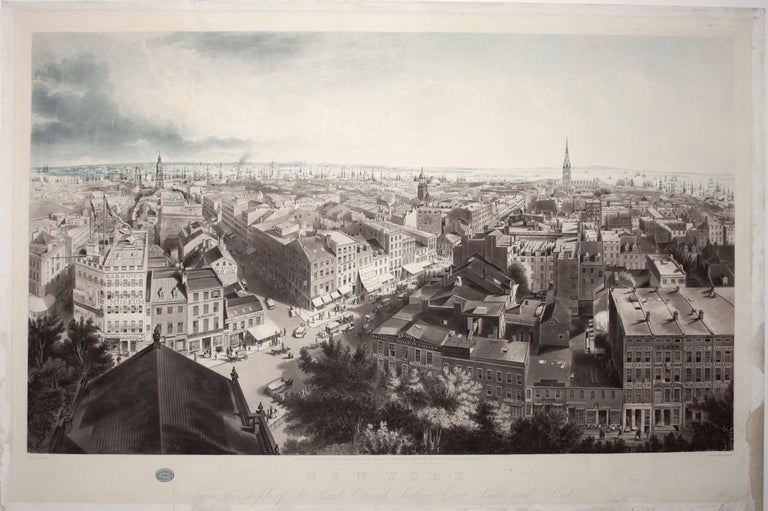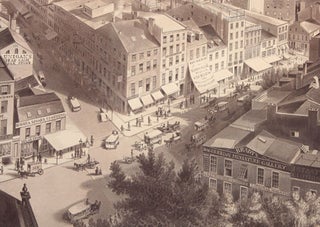New York From the steeple of St. Paul's Church, looking East, South and West.
23 1/2 x 33 3/4 inches. Aquatint & etching with original hand color. Expertly conserved & mounted on new linen. Repairs to outer margins on bottom & right side, slight loss to bottom of few letters in "From" in title, three mended tears, two entering printed surface, else good condition with no other image loss.
"Here is an extraordinary view of Manhattan as a rapidly developing metropolis. John William Hill has placed us at just the right height for peering into the city's streets, sizing up the look of its buildings, and noting the increasing density of it structures as the midpoint of the nineteenth century is nearly reached" (Deak). The area in the immediate foreground, the intersections Broadway, Ann and Fulton streets, anchored by P. T. Barnum's Museum at left, was one of the city's busiest, and a famous tourist destination at the time. Nearby is another establishment of great interest at the time--Brady's Daguerrian Miniature Gallery, owned by one of the greatest photographers in American history, Matthew B. Brady. Not coincidentally, two of his most popular photographic subjects were Tom Thumb and the singer Jenny Lind, both associated with the Barnum Museum. A great variety of other businesses are identifiable in view, while it is clear when surveying the city that steeples still reign as the high points of the city's skyline. In the distance can be seen the embracing waters surrounding the city and its outer rim crowded with ships.
Hill and Papprill were able to achieve marvelous as a result of the steeple-top perspective employed here. The manner in which the perspective seems to converge into the foreground gives the viewer the feeling of swooping right into the city. There is a wonderful prismatic play of the variously angled surfaces of city's buildings that renders the city's density as a pleasing prospect rather than as an oppressively packed-in place. The angularity of the buidings is further softened by the warm tones imparted by the aquatint process, the fairly abundant vegetation, and the lively human traffic on the sidewalks and streets.
* Deak 578; Voorsanger & Howat, Art and the Empire City, p. 220, no. 135
Sold


